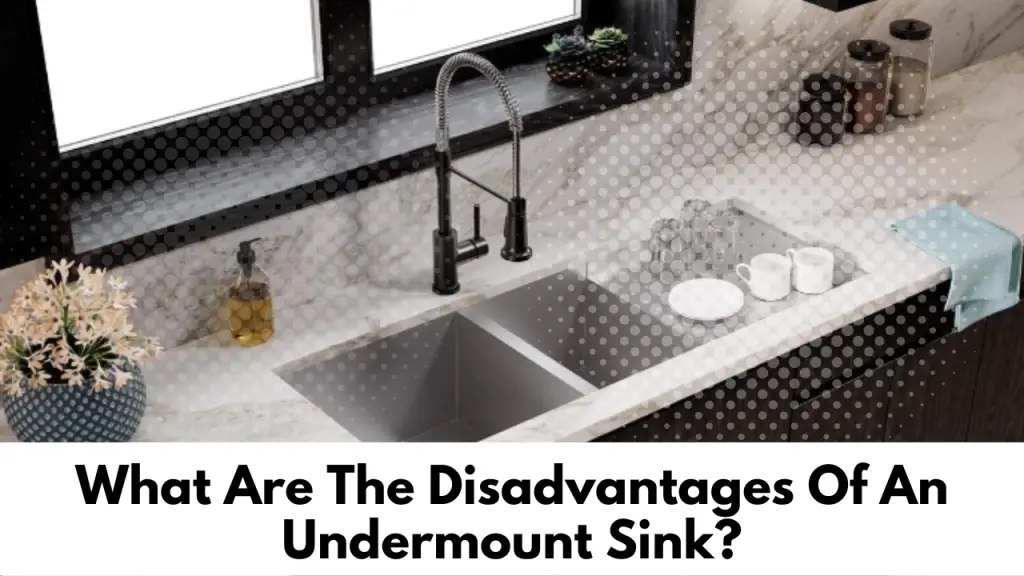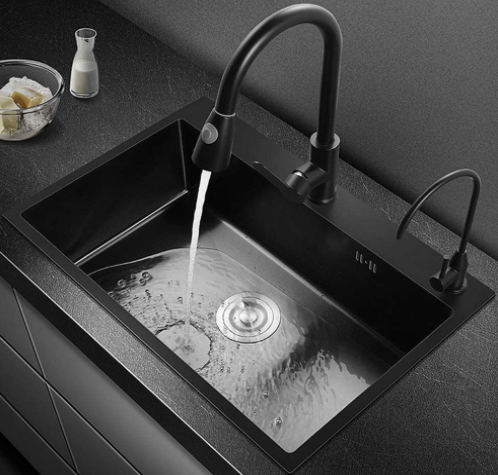
Many homeowners, including myself, like an undermount sink because of its sleek and contemporary design. Before putting in an undermount sink in your house, there are a few possible drawbacks. We’ll go over the main disadvantages of an undermount sink in this post so you can determine if it’s the best option for your house.
There are several potential disadvantages to using an undermount sink:
- Cost: Because they need more accurate installation and added support, undermount sinks might cost more than drop-in sinks.
- Complex installation: Because undermount sinks are positioned beneath the countertop rather than on top, they necessitate a precise and secure installation. This may complicate and lengthen the installation procedure, especially if you need more experience with DIY projects.
- Limited countertop material options: Not every countertop material can accommodate an undermount sink. You might have to restrict your countertop material options if the material is too thin or prone to cracking since it may need to be stronger to withstand the weight of the sink.
- Harder to clean: It may be more challenging to reach and clean the area surrounding the sink because the sink is situated beneath the countertop. You should use a specialized brush or tool to clean the area around the sink and below the countertop.
- Limited size and shape options: Since undermount sinks are often only available in rectangular or oval forms, not all kitchen designs may be compatible. You might not be able to install a very large or deep sink since the size and strength of the countertop material also restrict the sink’s size.
Do undermount sinks chip easily?
Since undermount sinks are positioned beneath the countertop and are not supported by the countertop, they may chip more quickly than other sinks. As a result, the sink may move or go out of alignment, leading to chipping if the sink needs to be placed correctly or if the countertop material needs to be stronger to hold the weight of the sink.
In addition, undermount sinks are more likely to chip if heavy objects are dropped into the sink or onto the countertop adjacent to it. The sink or the countertop material may chip due to the collision.
In general, the quality of the sink and the installation, as well as the durability and thickness of the countertop material, all affect the chance of an undermount sink chipping. Therefore, the danger of chipping can be decreased by utilizing high-quality sink and countertop materials and performing a proper installation.
Do undermount sinks ever fall out?
Theoretically, an undermount sink might come loose if it is not installed properly or if the countertop’s construction cannot hold the sink’s weight. In addition, if the sink is not firmly fixed to the underside of the countertop, it may gradually become loose and eventually fall out.
However, this only happens sometimes. As long as they are fitted correctly and the countertop material is sturdy enough to hold the sink, undermount sinks are intended to be firmly fastened to the underside of the countertop. They should not come free or fall out.
To avoid the sink from falling out, you should remedy the problem as soon as you discover that your undermount sink is beginning to come loose or feels insecure. To provide the sink more support, this can include resecuring it or strengthening the countertop material.
What is the most durable undermount sink?
Undermount sinks can be made from various materials, and each has advantages and flaws that may increase or decrease its durability. The following materials make up some of the most resilient undermount sinks:
- Stainless steel: Because it is resistant to stains, scratches, and corrosion, stainless steel is a common material choice for undermount sinks. It works with many tabletop materials and is simple to maintain and clean.
- Granite: Granite undermount sinks are renowned for their durability and resistance to stains and scratches since they are built from a single piece of pure granite. They are also heat-resistant and simple to clean.
- Quartz: A composite material of crushed quartz and resin is used to create quartz undermount sinks. They are heat, scratch, and stain resistant and simple to clean and maintain.
- Acrylic: Undermount sinks made of acrylic are constructed from a plastic-like material that is lightweight, strong, scratch- and stain-resistant. Although they may not be as heat-resistant as other materials, they are also simple to clean and maintain.
The most resilient undermount sink will ultimately depend on your requirements and tastes. Choose the material that best satisfies your goals and budget after considering the unique qualities of each option.

What is better, an undermount sink or drop-in?
Which sink is preferable for you will depend on your needs and tastes. Both undermount sinks and drop-in sinks offer benefits and drawbacks. The following are some of the main distinctions between drop-in and undermount sinks:
Undermount sinks:
- Are installed below the surface, resulting in a smooth transition from the sink to the countertop.
- They need to be installed precisely and securely because the countertop is not supporting them.
- Due to the additional effort needed, installation may be more expensive.
- Since there is no lip around the sink to catch dirt and debris, they are typically easier to clean.
Drop-in sinks:
- They are supported by the countertop and made to sit on top of the countertop.
- Often require less precise attachment beneath the countertop, making them easier to install.
- Since they need less manpower, they are often less expensive to install.
- Because there is a lip around the sink that might trap dirt and debris, cleaning it could be more challenging.
Ultimately, your requirements and tastes will determine if an undermount sink or a drop-in sink is preferable for you. Choose the sink that best suits your demands and budget by considering its unique features.
How long should an undermount sink last?
The material an undermount sink is built of, how well it is utilized, and how well it is maintained will all affect how long it will last. With the right care and upkeep, premium undermount sinks constructed of enduring materials like granite or stainless steel ought to last for many years.
However, a few things can shorten the life of an undermount sink, including:
- Quality of the material: Generally, higher-quality materials like granite or stainless steel are more resilient and long-lasting than lower-quality ones.
- Quality of the installation: Proper installation is crucial to guaranteeing that the sink is firmly fixed to the underside of the countertop and won’t come away over time.
- Frequency of use: An undermount sink will deteriorate more quickly the more it is used. A sink may only survive for a short time if used frequently.
- Maintenance: An undermount sink’s lifespan may be increased with the right care and maintenance. The sink should be frequently cleaned and dried, avoid strong or abrasive cleaning agents, and not drop heavy things into the sink.
Overall, a high-quality undermount sink should endure for many years with regular care and upkeep.
Conclusion
In conclusion, even though undermount sinks have a special set of advantages, it’s crucial to consider any potential disadvantages before making a choice. For example, an undermount sink may be less tempting to many homeowners due to price, installation difficulty, limited countertop material choices, more difficult cleaning procedures, and limited size and shape alternatives.
However, an undermount sink may give your house a contemporary and upscale feel if you’re prepared to spend the money on a high-quality sink and feel confident about the installation procedure. Ultimately, whether or not you install an undermount sink will rely on your requirements, taste, and financial constraints.
